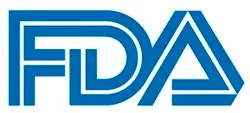Article
FDA Approves Zanubrutinib for Chronic Lymphocytic Leukemia or Small Lymphocytic Lymphoma
Author(s):
The FDA has approved zanubrutinib for the treatment of patients with chronic lymphocytic leukemia or small lymphocytic lymphoma.

The FDA has approved zanubrutinib (Brukinsa) for the treatment of patients with chronic lymphocytic leukemia (CLL) or small lymphocytic lymphoma (SLL).
The approval was based on findings from the phase 3 SEQUOIA (NCT03336333) and ALPINE (NCT03734016) trials.
Findings from SEQUOIA showed that at a median follow-up of 25.0 months, the median progression-free survival (PFS) was not reached (95% CI, not estimable [NE]–NE) with zanubrutinib vs 33.7 months (95% CI, 28.1-NE) with bendamustine and rituximab (Rituxan; BR) in patients with treatment-naïve CLL/SLL enrolled in a randomized cohort (HR, 0.42; 95% CI, 0.28-0.63; P ≤ .0001).
In a separate non-randomized cohort of SEQUOIA, zanubrutinib produced an overall response rate (ORR) of 88% (95% CI, 81%-94%) in patients with previously untreated CLL/SLL with 17p deletion (n = 110). The median duration of response (DOR) was not reached after a median follow-up of 25.1 months.
In ALPINE, zanubrutinib led to an ORR of 80% (95% CI, 76%-85%) vs 73% (95% CI, 68%-78%) with ibrutinib (Imbruvica) in patients with relapsed or refractory CLL/SLL (response rate ratio 1.10; 95% CI, 1.01-1.20; P = .0264). The median DOR was not reached in either arm after a median follow-up of 14.1 months.
In the randomized cohort of SEQUOIA, which included patients without 17p deletion, 479 patients were randomly assigned 1:1 to receive zanubrutinib until disease progression or unacceptable toxicity or 6 cycles of BR. PFS assessed by an independent review committee (IRC) served as the primary end point.
In ALPINE, a total of 652 patients with relapsed/refractory CLL/SLL were randomly assigned 1:1 to receive treatment with zanubrutinib or ibrutinib. The median number of prior lines of therapy was 1 (range, 1-8). IRC-assessed ORR and DOR served as the primary efficacy end points.
Regarding safety across trials of zanubrutinib, the most frequent adverse effects occuring in at least 30% of patients who received the second-generation BTK inhibitor were neutrophil count decrease (42%), upper respiratory tract infection (39%), platelet count decrease (34%), hemorrhage (30%), and musculoskeletal pain (30%).
Second primary malignancies, including non-skin carcinomas, occurred in 13% of patients. Atrial fibrillation or flutter were reported in 3.7% of patients, and 0.2% of patients experienced grade 3 or higher ventricular arrhythmias.
Per the FDA label, the recommended dose of zanubrutinib is 160 mg taken orally twice daily or 320 mg taken orally once daily until disease progression or unacceptable toxicity.
Reference
FDA approves zanubrutinib for chronic lymphocytic leukemia or small lymphocytic lymphoma. News release. FDA. January 19, 2023. Accessed January 19, 2023. https://bit.ly/3D1iUjq









